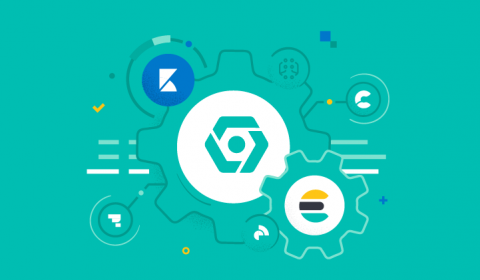Operations | Monitoring | ITSM | DevOps | Cloud
Latest Posts
All Hands on Deck: P2P Distribution Combats Latency to Speed Delivery
Troubleshooting Remote End-User Experience with Endpoint Monitoring
In today’s Tip of the Day, we are looking at troubleshooting remote end-user experience using Catchpoint’s Endpoint Monitoring solution. According to a recent set of figures from Stanford University, 42% of the U.S. labor force is working from home full-time. Based on their earnings, this group of work-from-home employees accounts for over two-thirds of U.S. economic activity.
How to Reduce MTTR With PagerDuty and Puppet's Relay
DevOps and SRE teams are under intense pressure to reduce the mean time to recovery (MTTR) when resolving incidents. With the proliferation of cloud services and the increasing complexity of DevOps toolchains, engineers today need to not only learn how to use these services, but also troubleshoot them when an incident is raised at 2 a.m. The problem is, many incident response processes are still manual today—cobbling together runbooks and ad hoc scripts and orchestrating people to respond.
Observability 101: Terminology and Concepts
When I first started following Charity on Twitter back in early 2019, I was quickly overwhelmed by the new words and concepts she was discussing. I liked the results she described: faster debugging, less alert fatigue, happier users. Those are all things I wanted for my team! But I was hung up on these big polysyllabic words, which stopped me from taking those first steps toward improving our own observability.
Smart Ticket Insights App for Splunk
Some of you may have attended the recent webinar on how to simplify ticket remediation with ML-Powered Analysis. We’re thrilled to announce that we have packaged the new app shown in that demo – the Smart Ticket Insights App for Splunk – and it is now live on Splunkbase!
Six-peat! Once Again, IDC Ranks Splunk #1 in ITOA Market Share
We just got some great news. IDC has ranked Splunk #1 for both market share and market revenue in their IDC Worldwide IT Operations Analytics Software Market Shares, 2019 report. This is the sixth year in a row IDC has ranked Splunk as #1 in ITOA. While we’re proud of this recognition, let me say right away that our success is due to the continued success of our customers, and we’re very grateful for the opportunity to be a part of it.
Monitoring Google Cloud with the Elastic Stack and Google Operations
Google Operations suite, formerly Stackdriver, is a central repository that receives logs, metrics, and application traces from Google Cloud resources. These resources can include compute engine, app engine, dataflow, dataproc, as well as their SaaS offerings, such as BigQuery. By shipping this data to Elastic, you’ll get a unified view of the performance of resources across your entire infrastructure from cloud to on-prem.
Investigative analysis of disjointed data in Elasticsearch with the Siren Platform
At Siren, we build a platform used for “investigative intelligence” in Law Enforcement, Intelligence, and Financial Fraud. Investigative intelligence is a specialisation of data analytics that serves the needs of those that are typically hunting for bad actors. Such investigations are the primary focus of law enforcement and intelligence, but are also critical to uncovering financial crime activities and for threat hunting in cybersecurity.
6 Tips to Prepare Your E-Commerce Site for the Biggest Holiday Traffic Surge Ever
6 Tips to Prepare Your E-Commerce Site for the Biggest Holiday Traffic Surge Ever So it begins. No, we are not talking about the school year, the football season, or a dizzying array of television shows about zombies, detectives, and of course: zombie detectives (seriously, it’s a thing).










